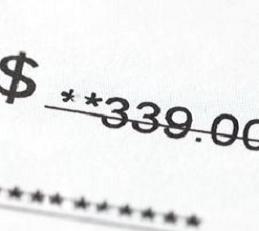How to calculate notes receivable
How to calculate interest receivable? What is note receivable interest rate? How do you calculate interest on a note? What are the key components of notes receivable?
A note receivable usually includes a specific interest rate, or a rate which is tied to another interest rate, such as a bank’s prime rate.
The calculation of the interest earned on a note receivable is: Principal x Interest rate x Time period = Interest earned. Use a financial calculator to compute the Present Value of the note. Calculate the Months. Determine the number of months in an accounting period for which you held. A dishonored note is a note that the maker failed to pay at maturity.
Since the note has mature the holder or payee removes the note from Notes Receivable and records the amount due in Accounts Receivable. At the maturity date of a note , the maker is responsible for the principal plus interest. Notes generally specify an interest rate, which is used to determine how much interest the maker of the note must pay in addition to the principal.
The payee classifies the note as a note receivable. Record Payment Of Notes Receivable When the customer pays the promissory note, hes also pay the interest accrued on the note. To a maker, the note is classified.
Payee: The person who holds the note and therefore is due to receive payment from. Companies classify the promissory notes they hold as notes receivable. A simple promissory note appears below. The face value of a note is called the principal, which equals the initial amount of credit provided. Well, it all depends on the wording on the promissory note as to how a maturity date is calculated.
If the note states that the term of the loan is in months, then the maturity date is calculated. Notes are often a key component of how a business finances its operations. CODES (days ago) The note issuer records the loan in the notes receivable account, an asset. To raise cash quickly, note issuers have the option to sell their notes receivables to a financial institution at a discount.
Going to the present value of table, the factor at the intersection of percent and five periods is. The discount on notes receivable account is a contra-asset account. It follows the note receivable , amortized over the five-year life. Notes are usually sold (discounted) with recourse, which means the company discounting the note agrees to pay the financial institution if the maker dishonors the note.
When notes receivable are sold with recourse, the company has a contingent liability that must be disclosed ni the notes accompanying the financial statements.
In the equation, days refers to the number of days in the period being measures (usually a year or half of a year). It moves from the balance sheet to the income statement via interest revenue using the effective-interest method. Examples of Notes Receivable. A company lends one of its important suppliers $10and the supplier gives the company a written promissory note to repay the amount in six months along with interest at per year.
The credit of $10will be to Cash. Notes receivable have several defining characteristics that include principal, length of contract terms, and interest. The principal of a note is the initial loan amount, not including interest, requested by the customer. If a customer approaches a lender, requesting $00 this amount is the principal. Refer to the collection of schedule below for the note details.
Since the company discounts the note before earning any interest revenue, interest expense is $78. Suppose the company holds the note for days before discounting it. The nature of a company's accounts receivable balance depends on the sector and industry in which it operates, as well as the particular credit policies the corporate management has in place. The company records this transaction by debiting cash for $921. When the customer eventually pays the invoice, the accounting software records the cash receipt transaction with a debit to the cash account and a credit to the accounts receivable account.
Trade receivables vary from non trade receivables in that non trade receivables are for amounts owed to the company that fall outside of the normal course of business, such as employee advances or insurance.

Comments
Post a Comment